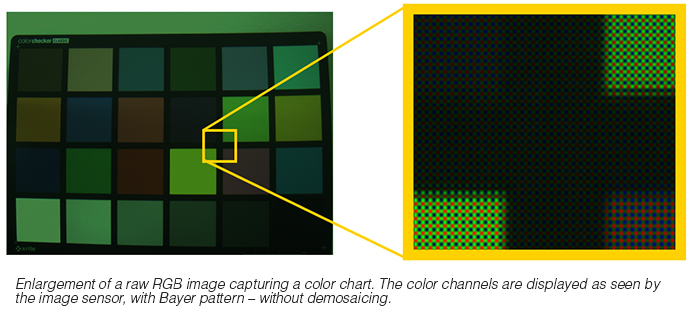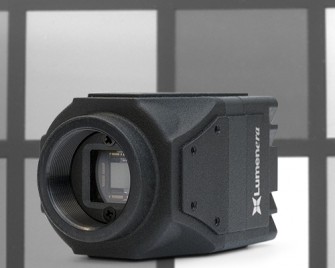Monochrome cameras can easily be overlooked when searching for an imaging solution since many new cameras boast vivid color, sharp contrast, and improved low light performance. There are many applications, however, that would benefit from using a monochrome camera as they produce sharper images with better resolution, output smaller file sizes, and are more sensitive to light.
The main difference between a monochrome and color image sensor is the lack of a color filter array (CFA). The removal of this optical band pass filter allows for a greater amount of photons to reach the photosensitive surface of the sensor, rendering it more sensitive to light which equates to higher quantum efficiency. In addition to this, color cameras usually have IR cut filters to prevent infrared light from generating color aberrations. Without these filters, the red, green, and blue pixels would also react to various wavelengths in the NIR band resulting in the generation of strange and inaccurate colors. Since each pixel of a monochrome sensor can detect a broader spectrum of light due to the absence of the CFA and IR cut filter, the overall performance of the camera improves significantly in low lighting conditions. Additional improvements are therefore observed at higher wavelengths, specifically beyond 650 nm, where Near Infrared (NIR) begins.
Cameras equipped with CFAs must interpolate the color data filtered out by the optical filters via complex demosaicing algorithms. Since the data is interpolated and not measured, a margin of error is introduced by the calculations. It becomes obvious that by removing the CFA, the added error is eliminated. This translates to a sharper image with a higher effective resolution, since each pixel of a monochrome sensor contains a measured value and is not influenced by its neighbors.


The removal of the CFA is also attributed to the reduction of the monochrome image file size. As monochrome image data does not contain specific color channel information, the image size is reduced threefold. This size reduction would also allow an increase in bit depth while maintaining storage savings, camera permitting.
Lumenera has wide variety of camera models that are available in monochrome variants. Our industrial and scientific grade monochrome cameras are ideal for applications where sensitivity and increased spatial resolution are of utmost importance. Some of these uses include intelligent traffic systems, where automated tolling cameras must capture vehicle license plates, specifically in the overnight hours; in unmanned aerial vehicles when used for measuring the amount of IR light reflected from vegetation to determine the health and hydration needs of the plants; and in life sciences, where specimens under a microscope are stained with dyes that emit very faint amounts fluorescence in wavelengths above 650 nm.

These are but three examples of many where increased sensitivity to light and the detection ability beyond the color spectrum are necessary for highly advanced technical processes. Lumenera continues to strive to offer imaging products and technical support for a wide range of specialized environments, including those where the need for increased sensitivity and resolution are at the top of the requirements list.


